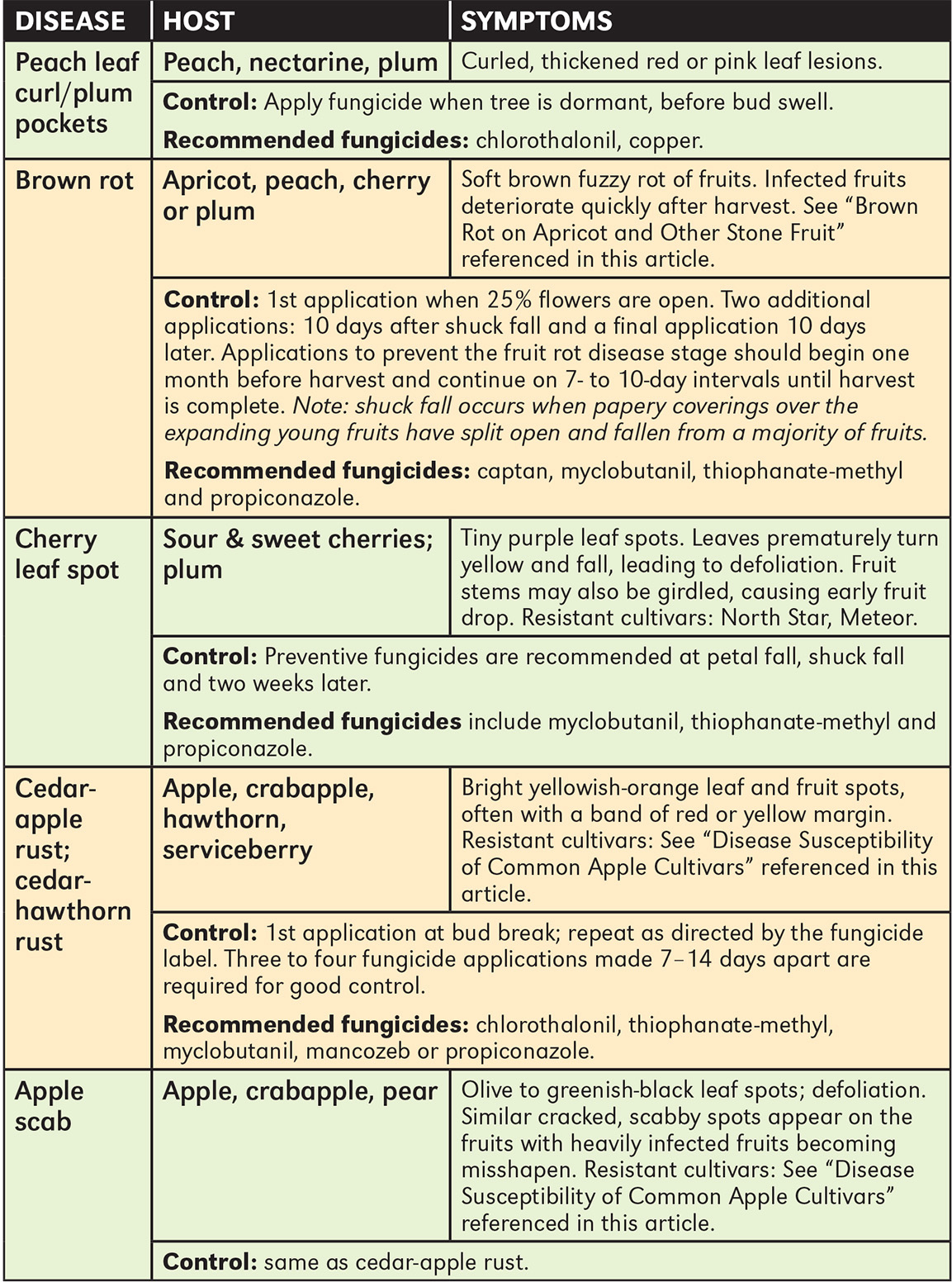
By Sarah Browning, Extension Educator in Lancaster County
Fruit trees will soon be blooming, marking the beginning of another growing season. Many diseases become active during blooming, so it’s time to prepare to protect your trees and ensure a good harvest. If your trees have a history of these common disease problems, start preparing now for control.
ORGANIC FRUIT DISEASE CONTROL
Organic fruit disease control includes the following practices:
• Prune out cankered branches ASAP. Ideal pruning time for fruits is late February into March.
• Rake up and discard any infected leaves and mummies from last year.
• Remove mummies in the tree as they appear during the growing season.
• For peach brown rot control, after harvest, immediately cool and refrigerate or process fruits to prevent fungal infection from causing fruit rot.
• Plant resistant varieties.
DISEASE CONTROL RESOURCES
• Nebraska Extension NebGuide, “Fruit Tree Cultivars for Nebraska,” (G1005) at https://go.unl.edu/fruittrees
• Nebraska Extension NebGuide, “Brown Rot on Apricot and Other Stone Fruits” (G1965) at https://go.unl.edu/brown-rot-on-apricots
• Purdue Extension publication “Disease Susceptibility of Common Apple Cultivars” (BP-132-W) at https://bit.ly/applecultivars.
SPRAY SCHEDULE FOR ALL FRUITS
For a complete spray schedule for all home fruits, refer to the University of Missouri’s publication “Fruit Spray Schedules for the Homeowner” (g6010) at https://extension.missouri.edu/g6010. Always read and follow all label directions and precautions.
****************************************
DISEASE/HOST/SYMPTOMS
Disease: Peach leaf curl/plum pockets
Host: Peach, Nectarine, plum
Symptoms: Curled, thickened red or pink leaf lesions.
Control: Apply fungicide when tree is dormant, before bud swell.
Recommended fungicides: chlorothalonil, copper.
Disease: Brown rot
Host: Apricot, peach, cherry or plum
Symptoms: Soft brown fuzzy rot of fruits. Infected fruits deteriorate quickly after harvest. See “Brown Rot on Apricot and Other Stone Fruit” referenced in this article.
Control: 1st application when 25% flowers are open. Two additional applications: 10 days after shuck fall and a final application 10 days later. Applications to prevent the fruit rot disease stage should begin one month before harvest and continue on 7- to 10-day intervals until harvest is complete. Note: shuck fall occurs when papery coverings over the expanding young fruits have split open and fallen from a majority of fruits.
Recommended fungicides: captan, myclobutanil, thiophanate-methyl and propiconazole.
Disease: Cherry leaf spot
Host: Sour & sweet cherries; plum
Symptoms: Tiny purple leaf spots. Leaves prematurely turn yellow and fall, leading to defoliation. Fruit stems may also be girdled, causing early fruit drop. Resistant cultivars: North Star, Meteor.
Control: Preventive fungicides are recommended at petal fall, shuck fall and two weeks later.
Recommended fugicides: include myclobutanil, thiophanate-methyl and propiconazole.
Disease: Cedar-apple rust; cedar-hawthorn rust
Host: Apple, crabapple, hawthorn, serviceberry
Symptoms: Bright yellowish-orange leaf and fruit spots, often with a band of red or yellow margin. Resistant cultivars: See “Disease Susceptibility of Common Apple Cultivars” referenced in this article.
Control: 1st application at bud break; repeat as directed by the fungicide label. Three to four fungicide applications made 7–14 days apart are required for good control.
Recommended fugicides: chlorothalonil, thiophanate-methyl, myclobutanil, mancozeb or propiconazole.
Disease: Apple scab
Host: Apple, crabapple, pear
Symptoms: Olive to greenish-black leaf spots; defoliation. Similar cracked, scabby spots appear on the fruits with heavily infected fruits becoming misshapen. Resistant cultivars: See “Disease Susceptibility of Common Apple Cultivars” referenced in this article.
Control: same as cedar-apple rust.
****************************************
FUNGICIDES COMMONLY AVAILABLE AT GARDEN CENTERS
• Captan: Bonide Captan
• Chlorothalonil: Daconil, Bonide Fung-onil, Ortho Garden Disease Control
• Copper: Bonide Liquid Copper Fungicide
• Thiophanate-methyl: Cleary’s 3336
• Myclobutanil: Spectracide Immunox
• Mancozeb: Bonide Mancozeb Flowable with Zinc
• Propicopnazole: Bonide Infuse (Labeled for use on fruit-bearing apricot, cherry, nectarine, peach, plum and prune trees. Can only be used on non-fruit-bearing apple trees; those trees from which no fruits will be harvested for a year.).
Note: Reference to commercial products or trade names is made with the understanding that no discrimination is intended. These products are listed as examples only. No endorsement by the Nebraska Extension is implied.